ВУЗ: Казахская Национальная Академия Искусств им. Т. Жургенова
Категория: Книга
Дисциплина: Не указана
Добавлен: 03.02.2019
Просмотров: 17262
Скачиваний: 51
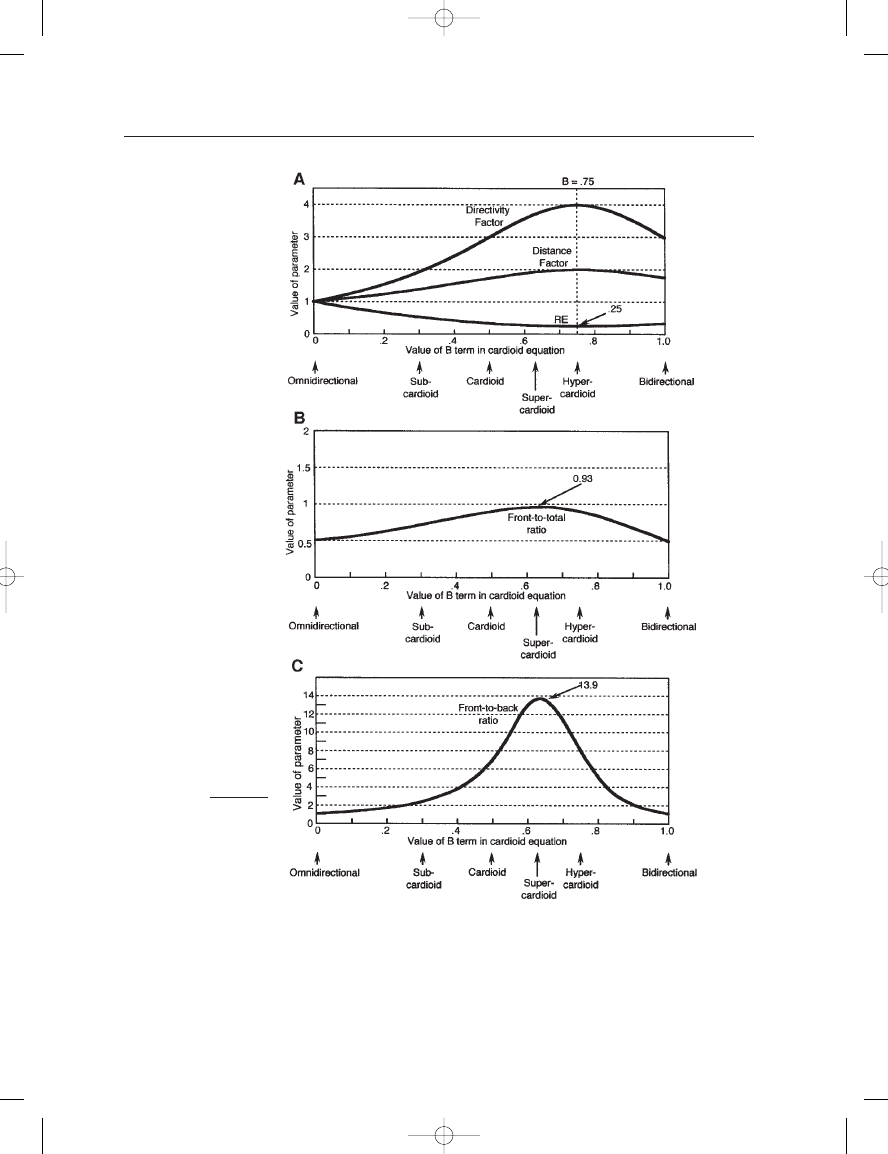
5: First-Order Directional Microphones
73
Working along slightly different lines, Olson (1957) describes a car-
dioid ribbon microphone, a variant in the 77-DX series, that effectively
divided the ribbon into two sections, as shown in Figure 5–9. The upper
section of the ribbon provided a gradient operation while the lower sec-
tion provided pressure operation. Electrical summation of the pressure
and gradient effects took place in the ribbon itself.
FIGURE 5–6
Graphical illustrations of
directivity factor, distance
factor, random efficiency,
front-to-total ratio, and
front-to-back ratio for the
first order family.
Earg_05.qxd 14/9/04 2:40 PM Page 73
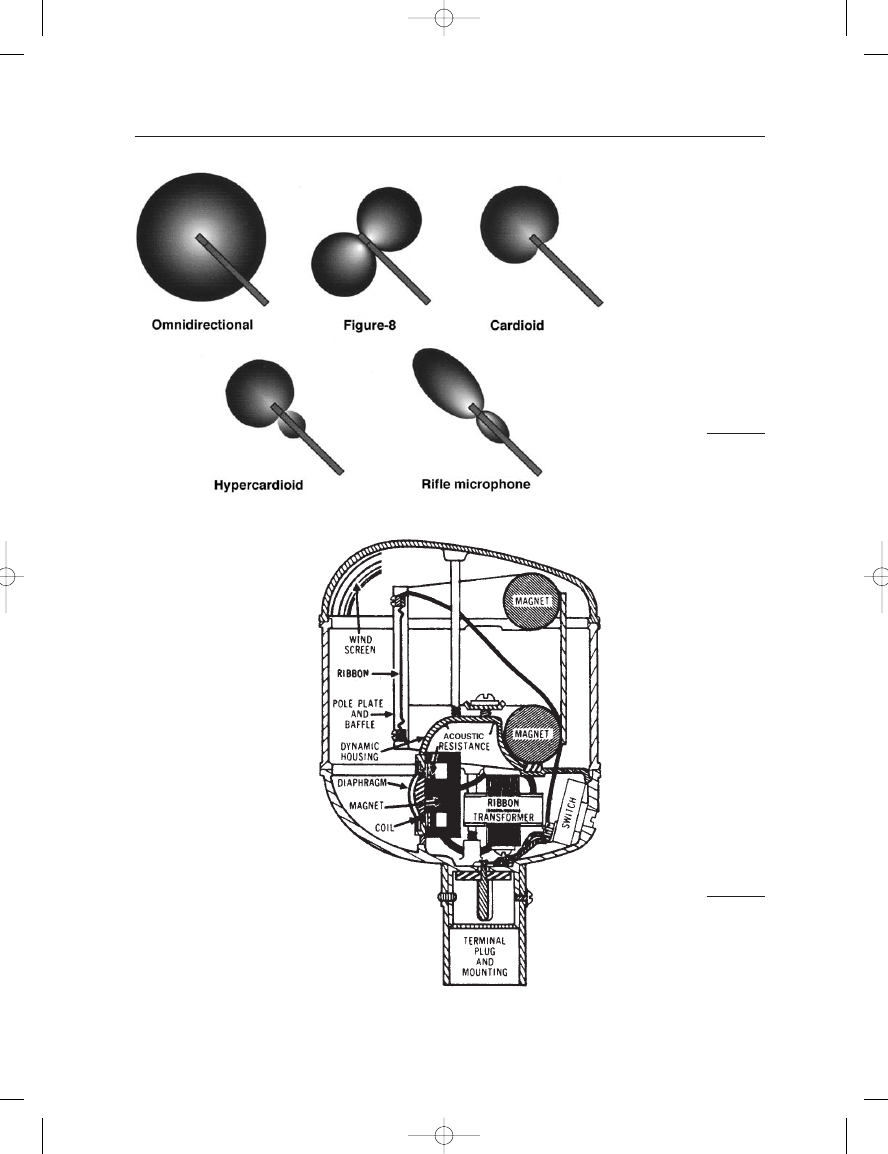
THE MICROPHONE BOOK
74
FIGURE 5–7
Three-dimensional
“directivity balloons” for
the first-order family.
FIGURE 5–8
Section view of the
Western Electric model
639 dual-element variable
directional microphone.
(Figure courtesy of Altec.)
Earg_05.qxd 14/9/04 2:40 PM Page 74
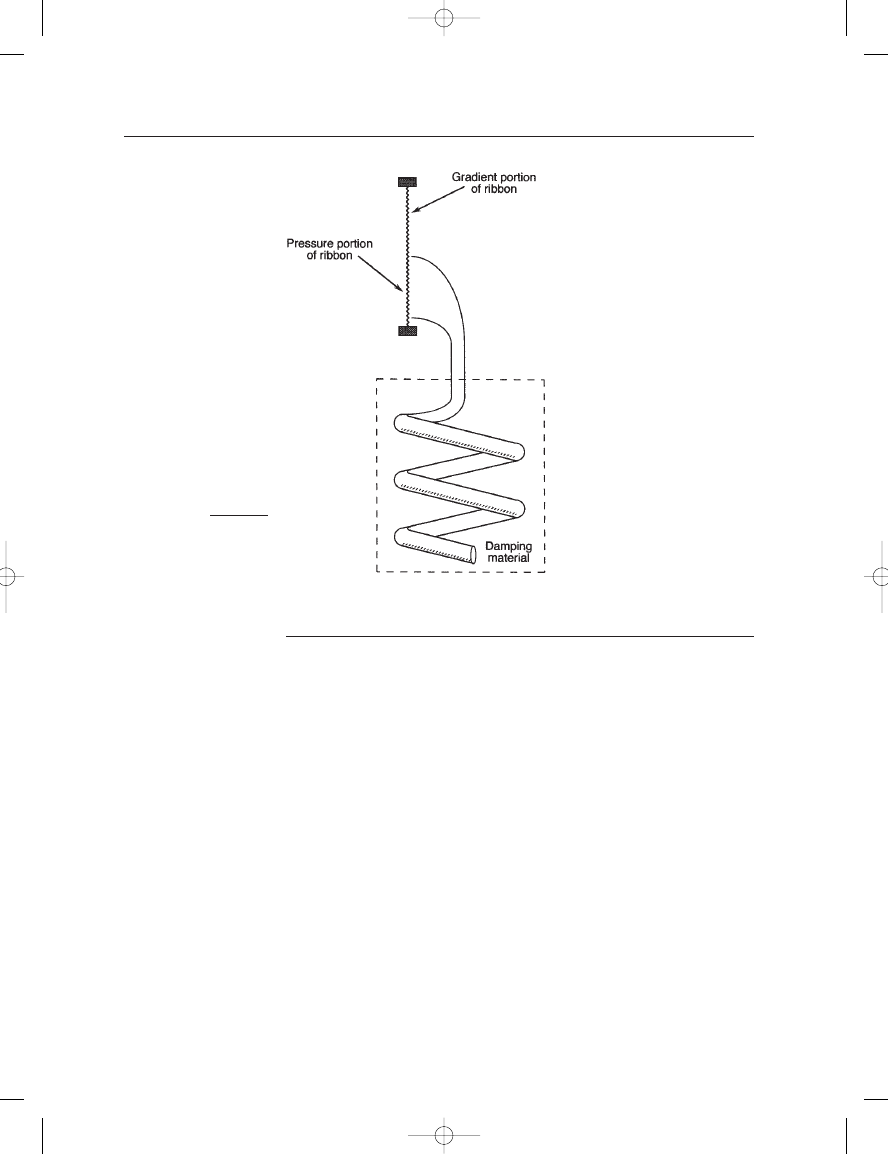
5: First-Order Directional Microphones
75
PROXIMITY EFFECT IN CARDIOID MICROPHONES
Since the cardioid pattern is a combination of a pressure element (which
has no proximity effect) and a gradient element (which does), we would
expect the cardioid pattern to exhibit somewhat less proximity effect
than the gradient element alone. This is in fact the case, and Figure 5–10
shows the proximity effect on-axis for a cardioid microphone as a func-
tion of operating distance. For comparison with the figure-8 pattern, see
Figures 4–15 and 4–16.
It is also necessary to consider proximity effect in a cardioid micro-
phone as a function of the operating angle, and this is shown in
Figure 5–11 for an operating distance of 0.6 m (24 in). For on-axis oper-
ation, the proximity effect will be the same as shown in Figure 5–10 for
the same operating distance. Note that at 90
there is no proximity
effect. The reason is that at 90
there is no contribution from the gradi-
ent element; only the pressure element is operant, and it exhibits no
proximity effect. As we progress around the compass to 180
we observe
that, for sound sources in the far field, there will be no response.
However, as the sound source at 180
moves closer to the microphone,
there will be a pronounced increase in proximity effect at very low fre-
quencies. The rapid increase in response with lowering frequency at 180
FIGURE 5–9
Section view of mechanism
of a ribbon cardioid
microphone.
Earg_05.qxd 14/9/04 2:40 PM Page 75
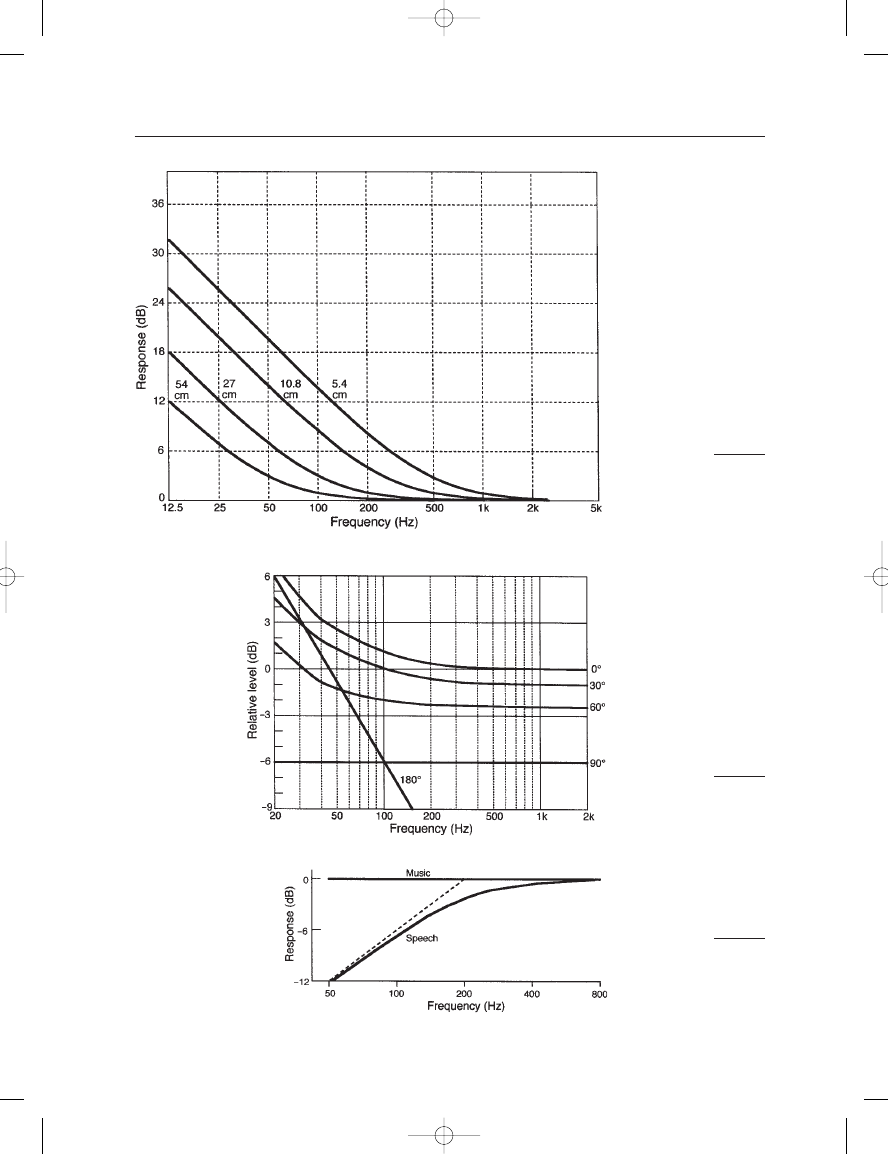
THE MICROPHONE BOOK
76
FIGURE 5–12
Typical action of a
high-pass filter to reduce
proximity effect at close
working distances.
FIGURE 5–10
Proximity effect versus
operating distance for a
cardioid microphone on
axis.
FIGURE 5–11
Proximity effect versus
operating angle at a fixed
distance of 0.6 m (24 in).
Earg_05.qxd 14/9/04 2:40 PM Page 76
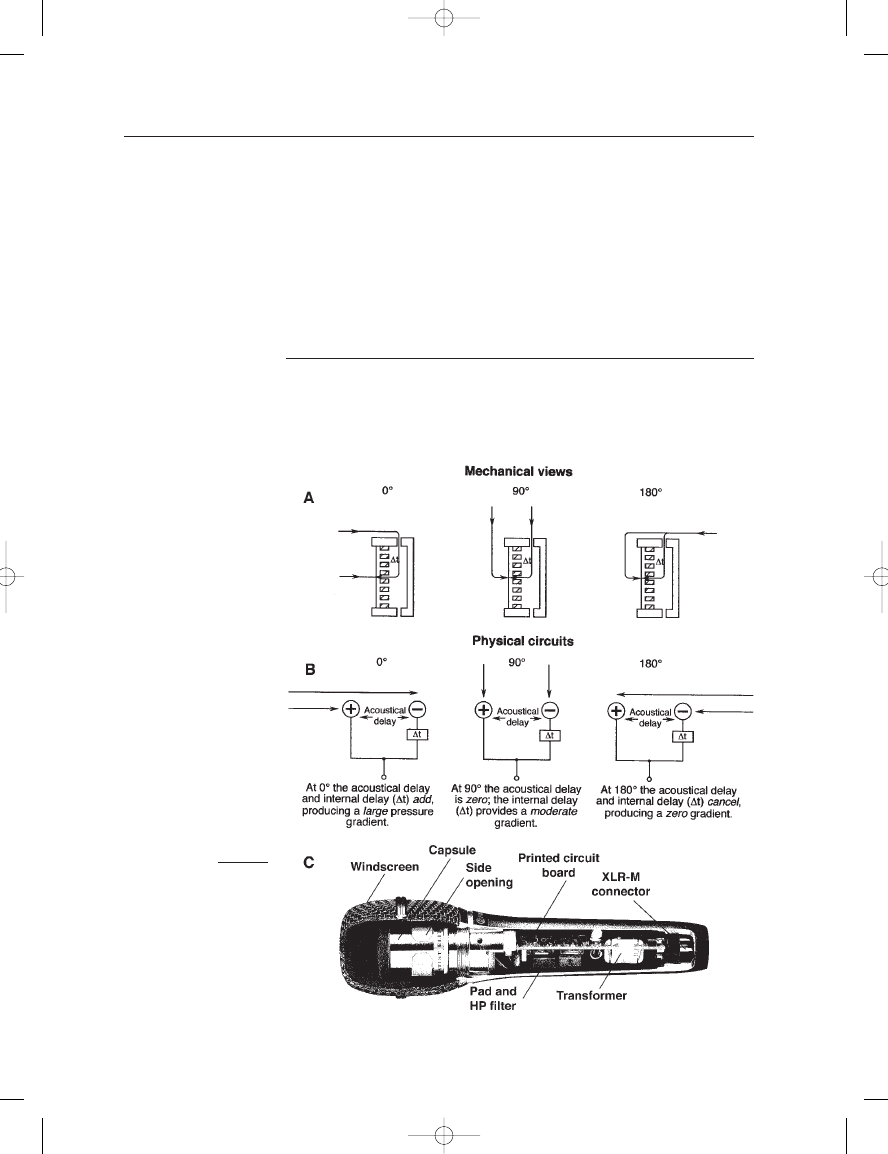
5: First-Order Directional Microphones
77
is due to the subtractive relationship between gradient and pressure
quantities at that angle.
Most directional microphones, dynamic or capacitor, have a built-in
switch providing an LF cut in response to partially counteract proximity
effect when the microphone is used at short operating distances, as
shown in Figure 5–12. This response modification is used primarily for
speech applications; for many music applications the proximity LF boost
may be considered a benefit.
SINGLE DIAPHRAGM CARDIOID MICROPHONES
A single diaphragm cardioid capacitor microphone is shown in
Figure 5–13; representations of sound incident at 0
, 90, and 180 are
shown at A, and the corresponding physical circuits are shown at B. The
diaphragm is resistance controlled. Note that there is a side opening in
FIGURE 5–13
Basic principle of a single
diaphragm cardioid
microphone; mechanical
views (A); physical circuits
(B); cutaway view of a
capacitor single diaphragm
cardioid microphone
(C). (Photo courtesy of
Audio-Technica US.)
Earg_05.qxd 14/9/04 2:40 PM Page 77